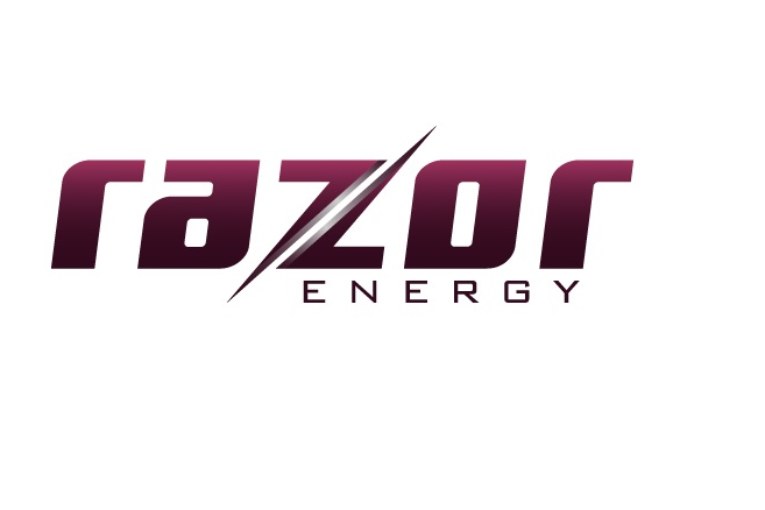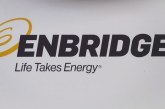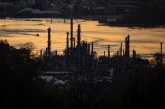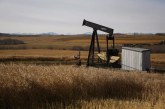
[ad_1]
CALGARY, Alberta, April 11, 2022 (GLOBE NEWSWIRE) — Razor Energy Corp. (“Razor” or the “Company”) (TSXV: RZE) announces its fourth quarter and year end 2021 financial and operating results. Selected financial, operational and reserves information is outlined below and should be read in conjunction with Razor’s audited consolidated financial statements, management’s discussion and analysis and annual information form (“AIF”) for the year ended December 31, 2021 which are available on SEDAR at www.sedar.com and the Company’s website www.razor-energy.com.
RECENT HIGHLIGHTS
- Financing: On March 9, 2022, the Company closed a senior debt financing for US$11.0 million (CAD $14.1 million) which provides the remaining funds to complete the Co-produced Geothermal Power Project (“Geothermal Project”) in Swan Hills, Alberta.
- Rights Offering: On March 31, 2022, the Company announced a rights offering to eligible holders of its common shares to purchase flow though shares. The Company anticipates raising $5 million and intends to use the proceeds to fund certain eligible expenses yet to be incurred for the Geothermal Project, and eligible expenses on various early stage power projects including additional geothermal initiatives. The rights offering is expected to close on May 9, 2022.
FOURTH QUARTER AND YEAR END 2021 HIGHLIGHTS
- Cash Flow: During the fourth quarter of 2021, achieved $13.5 million of cash flow from operating activities.
- Net Income: Generated $19.2 million of net income in Q4 2021.
- Production: Averaged 4,359 boe/d in Q4 2021 which represents a 22% increase from Q3 2021.
- Swan Hills Acquisition: Strategic consolidation in Q3 2021 of Razor’s working interest in Swan Hills Unit No.1 to 49.7%, adding long life low-risk light oil reserves, production and cash flow underpinned by industry-leading annual base decline rate of 10%.
- Geothermal Project: Commenced project execution on the Geothermal Project with estimated completion within the third quarter of 2022. The Geothermal Project will be capable of generating up to 21 MW of grid connected power, of which up to 30% will be sustainable clean power generation.
- ESG and Sustainability: Deposited approximately 2,500 tonnes of hydrocarbon impacted soils into Razor’s treatment facility in Virginia Hills, which employs bioremediation to treat hydrocarbon-impacted soils. This first batch of soil is expected to be remediated by Q2 2022.
- Decommissioning Liabilities Reduction: Settled $3.6 million of decommissioning obligations in 2021, which includes $1.9 million related to government grants received for well site rehabilitation through Alberta’s Site Rehabilitation Program (“SRP”).
NEAR AND MEDIUM-TERM OBJECTIVES
- Safely execute our production enhancement program and Geothermal Project.
- Reduce net debt through continued optimization of capital spending and increased efficiencies to reduce operating and general and administrative costs.
- Actively identify and consider business combinations with other oil and gas producers as well as service companies.
- Further analyze ancillary opportunities including power generating projects, oil blending and vertical services integration.
2022 OUTLOOK
Razor
Razor continues to look forward and plan for the future while remaining focused on its long-term sustainability. The Company has an extensive opportunity set of high-quality wells requiring reactivation, many of which have payout metrics which exceed the Company’s economic thresholds. Razor will continue the production enhancement activity throughout 2022. Most activities involve repairs and maintenance work which will be expensed for accounting purposes and operating netbacks will be reduced during this timeframe. In aggregate, the annual base decline of these wells is anticipated to be consistent with the Company’s current corporate rate of approximately 12%.
The Company continues to focus on cost control on its operated properties. In addition to the planned production enhancement program, Razor will take a cautious and case-by-case approach to capital spending in 2022, focusing on low risk, low investment opportunities to increase field efficiencies and corporate netbacks.
The significant improvement in oil prices thus far in 2022 combined with a strong price outlook in the medium term, provides Razor with improved cash flow from operations and the Company anticipates reducing its net debt throughout 2022.
Razor has high reservoir quality, low decline, isolate carbonate Swan Hills reef light oil pools that contain large original oil in place with over 60 years of production history. Razor believes these reefs are ideally suited for carbon capture, utilization and storage (“CCUS”) and enhanced oil recovery (“EOR”) purposes1, in addition to geothermal power production and conventional open-hole horizontal development drilling upside.
Razor recognizes multiple deep value streams in its assets and is actively engaged in liberating them for the benefit of shareholders.
________________________
1These programs have been successfully demonstrated by the previous operator’s South Swan Hills Unit CO2 EOR Injection Pilot which ran from 2008 to 2010 in addition to CO2 injection programs carried out in the Swan Hills Unit No. 1 and Judy Creek oil pools from 2004 to 2010.
FutEra
In May 2021, FutEra Power Corp. (“FutEra”), a subsidiary of Razor entered the project execution stage of its Geothermal Project. On March 9, 2022, FutEra Power announced that it is fully financed and in final construction of its 21 MW Geothermal Project, of which up to 30% will be sustainable clean power generation. FutEra has successfully partnered with provincial and federal government agencies to invigorate the emerging geothermal industry. To date, Razor has received $13.0 million in government grants to support this power generation project. The total construction and commissioning budget for the Project is $37.0 million.
Legacy oil and gas fields face economic challenges with lower production levels and high fixed costs. However, these fields also have practical advantages when considering existing infrastructure, pipelines, wells, and operational footprints. To meet the objectives of creating lower carbon electricity and leveraging oil and gas operations, FutEra and Razor have successfully designed a geothermal/natural gas hybrid power plant in an operational oil and gas facility. Razor and FutEra continue to demonstrate the synergies and cooperation needed to define a type of transition energy and sets the standard of how traditional oil and gas companies can evolve into ‘energy and technology’ companies necessary for the future of the Alberta energy complex.
FutEra’s next phase of the Geothermal Project will be the design and implementation of a CCUS solution, with the objective to create a net negative carbon emitting power generation facility.
With Razor’s strategic acquisition of additional working interest in the Swan Hills area in the third quarter of 2021, FutEra has identified the potential for additional geothermal and/or natural gas power generation projects in Swan Hills Unit No.1. The volume and temperature of the produced fluids processed through two of the Unit’s main facilities are highly analogous to FutEra’s current Geothermal Project.
FutEra has identified and is in the process of reviewing and capturing additional projects including solar, wind, and other low carbon technologies. In addition, FutEra is in discussions with an industry resource partner to evaluate its renewable energy options and to develop a long term environmental, social and governance plan.
OPERATIONAL UPDATE
Production volumes for the fourth quarter of 2021 averaged 4,359 boe/d, an increase of 22% from production volumes in the same period of 2020 and represents a 22% production increase from Q3 2021. Highlights of the causes for the differences in production volumes between Q4 2021 and Q4 2020 are as follows:
- Swan Hills – production volumes increased 52% from the same period of 2020. Production in Q4 2021 was positively impacted by increased production as a result of the working interest acquisition of Swan Hills Unit No.1 in August 2021. In addition, the Company’s production enhancement program in Q4 2021 resulted in an additional 124 boe/d in production volumes, slightly offset by various third party, temporary infrastructure issues.The Company is continuing with its reactivation program in 2022, which will increase production in Swan Hills. In addition, the operator of Swan Hills Unit No.1 completed various production enhancement activities in Q3 and Q4 2021 and the Company anticipates production enhancement activities to continue in 2022.
- Kaybob – production volumes decreased 13% from the same period in 2020 due to operated wells going down, offset partially by an increase in non-operated production. The Company’s production enhancement program in Q1 2022 is focused in the Kaybob area.
- South District – production volumes decreased 22% from the same period in 2020 primarily due natural declines, non-operated infrastructure issues and a non-operated field being shut in due to operator insolvency. Production from this particular non-operated field was restarted late in Q4 2021 under a new operator. Production declines were somewhat offset by a production enhancement program during Q4 2021.
Razor’s operating expenses on a corporate level in Q4 2021 were at a historical high, with an increase as compared to Q3 2021 primarily due a full quarter of increased working interest ownership in Swan Hills Unit No.1 along with higher electricity costs and facility repairs.
However, operating costs on a $/boe basis decreased in Q4 2021 due to higher production levels, offset by higher workover activity.
The primary factors affecting operating costs on a $/boe basis are production levels, workover activity, and electricity pricing. Inherent within the Company’s hydrocarbon operations is a prominent fixed cost element, or those costs that are not related to production levels. On a relative basis these costs are higher with lower production. In Q4 2021, Razor’s production was higher than recent historical averages due to the factors described above. Razor’s reactivation program continued during Q4 2021 and will extend into 2022, with the majority of the costs being expensed. Furthermore, the electricity market has seen a continual rise in prices, which has recently stabilized.
CAPITAL PROGRAM
During the fourth quarter of 2021, Razor invested $8.5 million on its Geothermal Project and executed a major repair of one of its group pipelines at a cost of $1.6 million. The Company also capitalized an additional $0.4 million of turnaround costs that were executed on operated and non-operated turnarounds. As of December 31, 2021, Razor has received $13.0 million in government grants since inception in to support its Geothermal Project.
SELECT HIGHLIGHTS
The following tables summarizes key financial and operating highlights associated with the Company’s financial performance.
| Three Months Ended Dec 31, | Twelve Months Ended Dec 31, | |||||||
| ($000’s, except for per share amounts and production) | 2021 | 2020 | 2021 | 2020 | ||||
| Production | ||||||||
| Light Oil (bbl/d) | 2,774 | 2,023 | 2,250 | 2,176 | ||||
| Gas (mcf/d) 1 | 5,023 | 5,165 | 4,209 | 4,695 | ||||
| NGL (boe/d) | 747 | 701 | 572 | 824 | ||||
| Total (boe/d) | 4,359 | 3,585 | 3,524 | 3,783 | ||||
| Sales volumes | ||||||||
| Light Oil (bbl/d) | 2,693 | 2,024 | 2,231 | 2,179 | ||||
| Gas (mcf/d)1 | 4,481 | 4,461 | 3,772 | 3,767 | ||||
| NGL (bbl/d) | 747 | 701 | 572 | 824 | ||||
| Total (boe/d) | 4,187 | 3,469 | 3,432 | 3,631 | ||||
| Oil inventory volumes (bbls) | 15,200 | 8,203 | 15,200 | 8,203 | ||||
| Revenue | ||||||||
| Oil and NGLs sales | 25,157 | 11,011 | 72,265 | 42,728 | ||||
| Natural gas sales | 2,052 | 1,048 | 5,231 | 3,126 | ||||
| Blending and processing income | 623 | 1,456 | 3,222 | 5,416 | ||||
| Other revenue | 95 | 761 | 895 | 1,677 | ||||
| Total revenue | 27,927 | 14,276 | 81,613 | 52,947 | ||||
| Cash flows from operating activities | 13,606 | 356 | 8,152 | 4,193 | ||||
| Funds flow 2 | 1,657 | (126 | ) | 902 | 3,798 | |||
| Adjusted funds flow 2 | 2,557 | (120 | ) | 3,409 | 4,138 | |||
| Net income (loss) | 18,318 | (6,048 | ) | 16,808 | (46,197 | ) | ||
| Per share – basic and diluted | 0.80 | (0.29 | ) | 0.78 | (2.19 | ) | ||
| Weighted average number of shares outstanding (basic and diluted) | 22,757 | 21,064 | 21,491 | 21,064 | ||||
| Netback ($/boe) | ||||||||
| Oil and gas sales 3 | 67.85 | 36.56 | 60.26 | 33.12 | ||||
| Royalties | (14.82 | ) | (4.44 | ) | (10.21 | ) | (3.19 | ) |
| Adjusted operating expenses 2 3 | (36.90 | ) | (28.21 | ) | (38.08 | ) | (26.07 | ) |
| Production enhancement expenses 2 | (5.78 | ) | (2.23 | ) | (5.57 | ) | (1.70 | ) |
| Transportation and treating | (1.57 | ) | (2.93 | ) | (2.11 | ) | (2.16 | ) |
| Operating netback 2 | 8.78 | (1.25 | ) | 4.29 | – | |||
1) Natural gas production includes internally consumed natural gas primarily used in power generation.
2) Refer to “Non-IFRS and other financial measures”.
3) Excludes production enhancement expenses incurred in the period.
December 31, |
December 31, |
|||
($000’s, except for share amounts) |
2021 |
2020 |
||
Total assets |
237,855 |
163,709 |
||
Cash |
2,841 |
1,098 |
||
Long-term debt (principal) |
73,192 |
50,878 |
||
Minimum lease obligation |
1,947 |
3,469 |
||
Net debt 1 |
99,020 |
72,789 |
||
Number of shares outstanding |
23,314,466 |
21,064,466 |
1) Refer to “Non-IFRS and other financial measures.”
2021 YEAR-END RESERVES
For 2021, the net present value of before tax cash flows discounted at 10% (“NPV10”) for each reserve category disclosed below includes all abandonment, decommissioning and reclamation costs, and inactive well costs totaling $63.3 million.
| Summary of Gross Oil and Gas Reserves at December 311 | ||||||||
| Reserves Volumes (Mboe) |
NPV Before Income Tax Discounted at 10% (M$)1,2 |
|||||||
| 2021 | 2020 | 2021 | 2020 | |||||
| Proved | ||||||||
| Developed Producing | 9,768 | 7,416 | 89,144 | 26,553 | ||||
| Developed Non-Producing | 4,704 | 4,468 | 67,995 | 49,199 | ||||
| Undeveloped | 1,721 | 1,641 | 36,293 | 19,756 | ||||
| Total Proved | 16,193 | 13,525 | 193,413 | 95,508 | ||||
| Total Probable | 4,892 | 3,793 | 60,273 | 37,709 | ||||
| Total Proved plus Probable | 21,085 | 17,319 | 253,686 | 133,216 | ||||
1) The table summarizes the data contained in an independent report of Razor’s gross reserves, as evaluated by Sproule, qualified reserves evaluators, dated February 17, 2022. The figures have been prepared in accordance with the standards contained in the COGEH and the reserve definitions contained in National Instrument 51-101-Standards of Disclosure for Oil and Gas Activities. Gross reserves means the total working interest (operating and non-operating) share of remaining recoverable reserves owned by Razor before deductions of royalties payable to others and without including any royalty interests owned by Razor. Additional reserve information is included in the AIF.
2) NPV 10 is net present value of before tax cash flows discounted at 10%.
About Razor
Razor is a publicly traded junior oil and gas development and production company headquartered in Calgary, Alberta, concentrated on acquiring, and subsequently enhancing, and producing oil and gas from properties primarily in Alberta. The Company is led by experienced management and a strong, committed Board of Directors, with a long-term vision of growth focused on efficiency and cost control in all areas of the business. Razor currently trades on TSX Venture Exchange under the ticker “RZE.V”.
www.razor-energy.com
About FutEra
FutEra leverages Alberta’s resource industry innovation and experience to create transitional power and sustainable infrastructure solutions to commercial markets and communities, both in Canada and globally. Currently, it is developing a 21 MW co-produced geothermal and natural gas hybrid power project in Swan Hills, Alberta.
www.futerapower.com
About Blade
Blade Energy Services is a subsidiary of Razor. Operating in west central Alberta, Blade’s primary services include fluid hauling, road maintenance, earth works including well site reclamation and other oilfield services.
www.blade-es.com
[ad_2]
You can read more of the news on source



